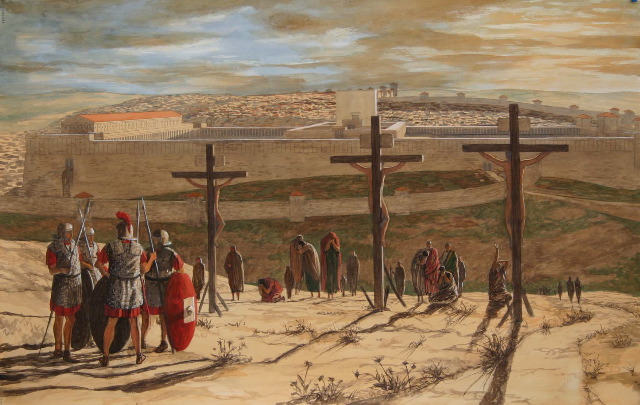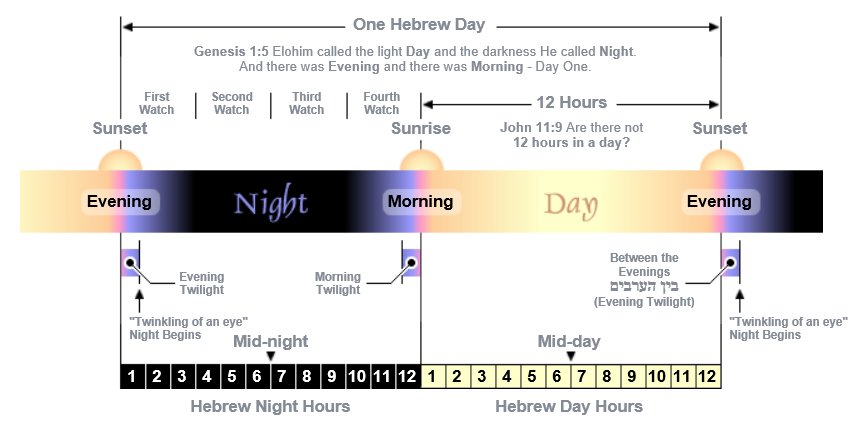Every year, with the celebration of the resurrection of the Lord Jesus Christ, there is always some confusion concerning the timing of all of these events. In this post I will try to clear up all of the confusion. In this way, we can get beyond the traditions of men and stick with the truth instead. In some religions, it is taught that our Lord died on Good Friday and then rose on the Sunday morning that followed. But this would only give a total of 2 nights (Friday and Saturday) and 1 day (Saturday). But this total, is contrary to what the Holy Bible teaches.
Matthew 12:39-40
39 But he answered and said unto them, An evil and adulterous generation seeketh after a sign; and there shall no sign be given to it, but the sign of the prophet Jonas:
40 For as Jonas was three days and three nights in the whale’s belly; so shall the Son of man be three days and three nights in the heart of the earth.
To analyze what happened we must begin with the hour that the Lord Jesus Christ died. The following scripture will provide the exact hour that the Lord died on the cross:

Mark 15:34-37
34 And at the ninth hour Jesus cried with a loud voice, saying, Eloi, Eloi, lama sa-bach-tha-ni? which is, being interpreted, My God, my God, why hast thou forsaken me?
35 And some of them that stood by, when they heard it, said, Behold, he calleth Elias.
36 And one ran and filled a spunge full of vinegar, and put it on a reed, and gave him to drink, saying, Let alone; let us see whether Elias will come to take him down.
37 And Jesus cried with a loud voice, and gave up the ghost.
The typical Hebrew day starts at 6:00PM in the evening. Night then continues for a period of 12 hours. At 6:00AM the daylight portion of the same day then begins. Therefore, the ninth hour is the equivalent of 3:00PM in the afternoon.

| Day | Portion of the Day | Comments |
| Day X | The ninth hour – Day X | Last few hours of Passover (Nisan 14), death on the cross. |
| Day X+1 | First night in the belly of the earth (12 hours) | Nisan 15 is a day of Holy Convocation (a high Sabbath) |
| Day X+1 | First day in the belly of the earth (12 hours) | |
| Day X+2 | Second night in the belly of the earth (12 hours) | |
| Day X+2 | Second day in the belly of the earth (12 hours) | |
| Day X+3 | Third night in the belly of the earth (12 hours) | |
| Day X+3 | Third day in the belly of the earth (12 hours) | |
| Day X+4 | Not found in the tomb | This occurs in the pre-dawn hours of Sunday morning (John 20:1-2) |
John 20:1-2
The first day of the week cometh Mary Magdalene early, when it was yet dark, unto the sepulchre, and seeth the stone taken away from the sepulchre.
2 Then she runneth, and cometh to Simon Peter, and to the other disciple, whom Jesus loved, and saith unto them, They have taken away the Lord out of the sepulchre, and we know not where they have laid him.
The table below shows by working backwards on what day the Lord Jesus was actually crucified in order for the sign of Jonah to be fulfilled:
| Day | CALENDAR DAY |
| Day X+4 | Sunday |
| Day X+3 | Saturday |
| Day X+2 | Friday |
| Day X+1 | Thursday |
| Day X | Wednesday |
Hence the Lord Jesus died on the cross Wednesday afternoon and not on Friday. This is consistent with the fact that the Lord Jesus stands in the center of time itself.
The Passover was implemented by the LORD when He used Moses to deliver the children of Israel out of the house of bondage to the Egyptians. When the last plague came wherein all the firstborn of man and beast in Egypt were slain.
Exodus 12:12-14
12 For I will pass through the land of Egypt this night, and will smite all the firstborn in the land of Egypt, both man and beast; and against all the gods of Egypt I will execute judgment: I am the LORD.
13 And the blood shall be to you a token upon the houses where ye are: and when I see the blood, I will pass over you, and the plague shall not be upon you to destroy you, when I smite the land of Egypt.
14 And this day shall be unto you for a memorial; and ye shall keep it a feast to the LORD throughout your generations; ye shall keep it a feast by an ordinance for ever.
The parallel here is that the Son of God would be sacrificed on Passover and shed His blood for all mankind throughout all the ages. This event takes place on the fourteenth day of the Hebrew month Nisan. The next day following, 15 Nisan, would be a Holy Convocation (also referred to as a Sabbath), wherein no servile work was to be done.
Leviticus 23:5-7
5 In the fourteenth day of the first month at even is the LORD’s passover.
6 And on the fifteenth day of the same month is the feast of unleavened bread unto the LORD: seven days ye must eat unleavened bread.
7 In the first day ye shall have an holy convocation: ye shall do no servile work therein.
Here is where the mix up came in, because some persons have locked in the Sabbath to mean only Saturday, not realizing that the “Sabbath” being referred to with respect to the crucifixion was really concerning the first day of the Feast of Unleavened Bread, which always followed Passover.
John 19:31
31 The Jews therefore, because it was the preparation, that the bodies should not remain upon the cross on the sabbath day, (for that sabbath day was an high day,) besought Pilate that their legs might be broken, and that they might be taken away.
This verse clearly differentiates this Sabbath as an “high day” as opposed to the regular Sabbaths that would occur every Saturday (really starting on Friday evening and proceeding to Saturday evening).
In conclusion, I exhort you to stick with the Truth and He shall make you free.